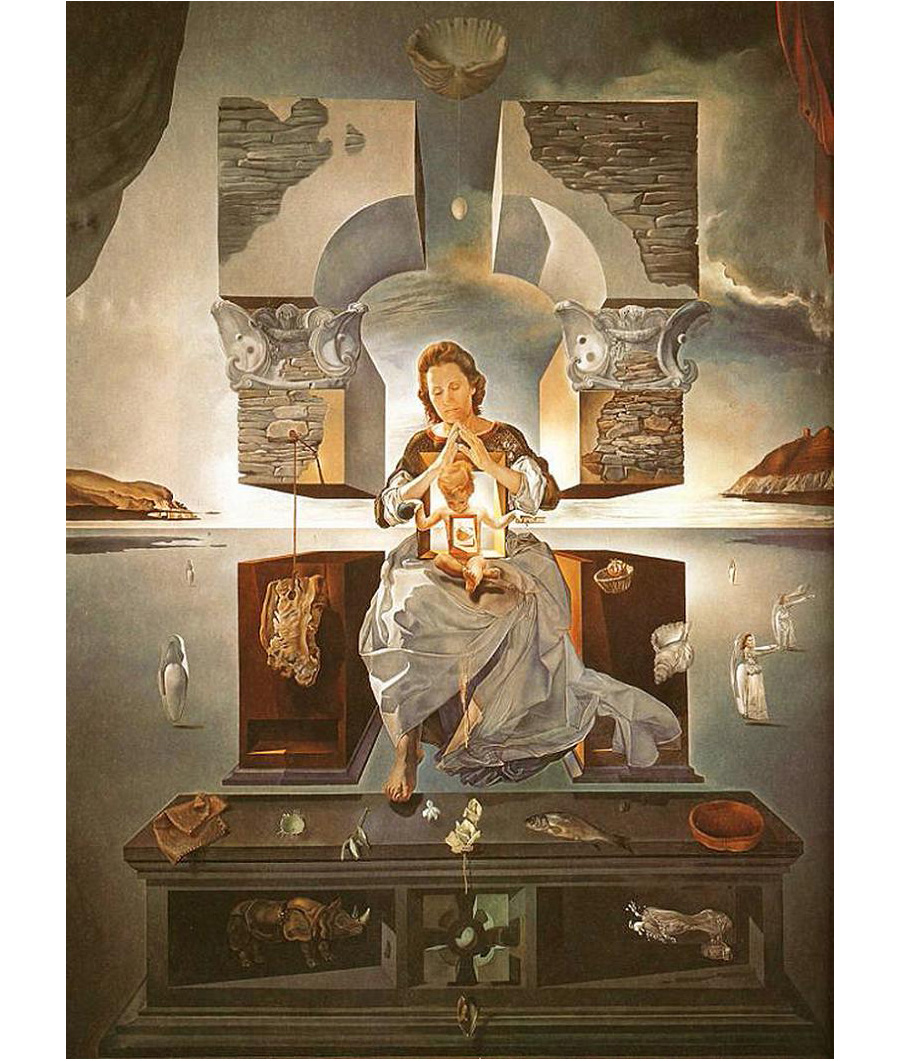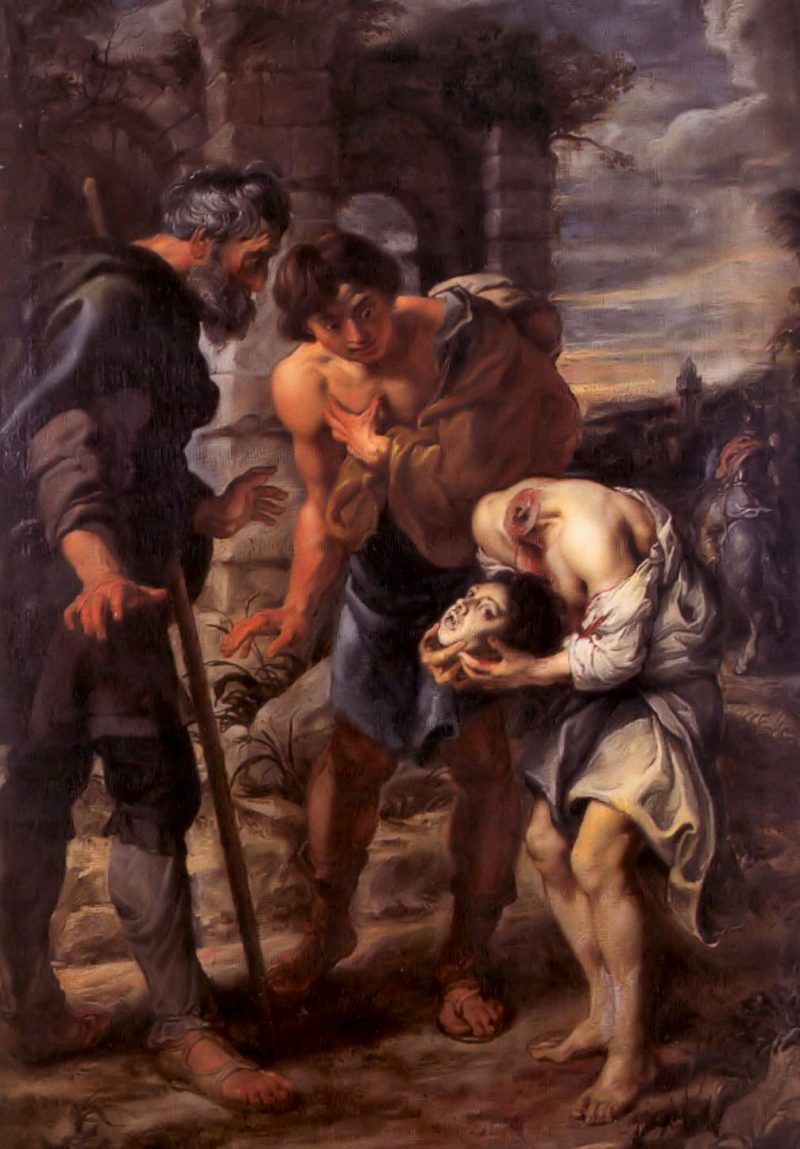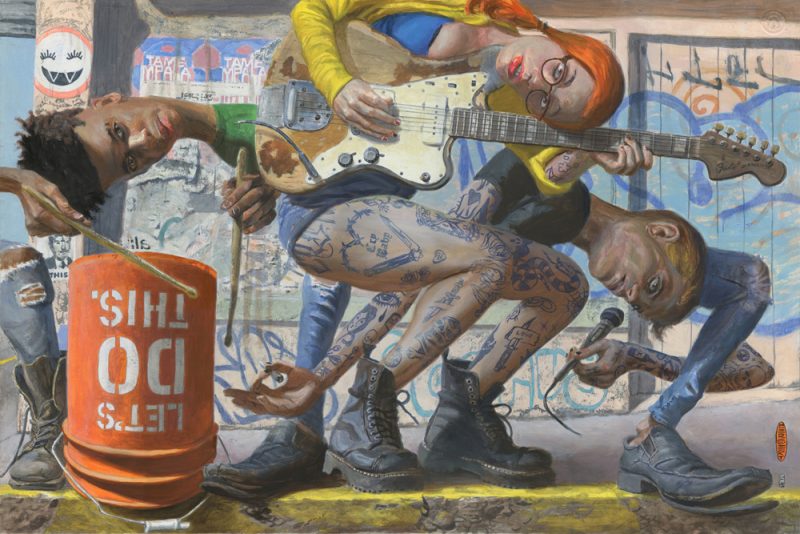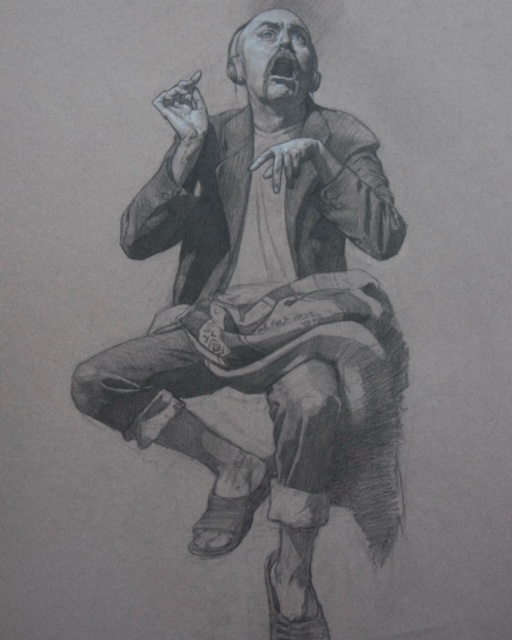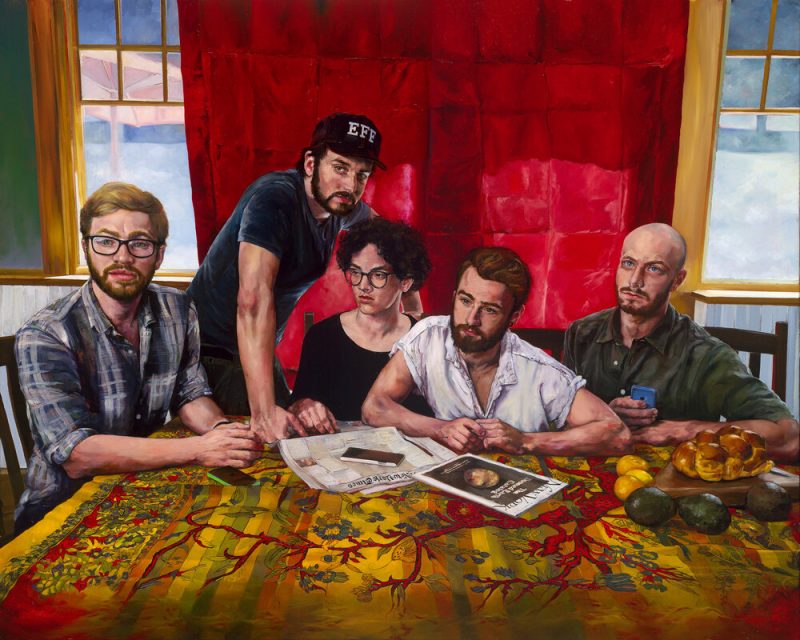There are two versions of this painting, this one being the second. It is monumental in size, and Dalí felt he had much improved on the first version. In the background we see the Port of Lligat, Spain, while Madonna and Child are suspended in the foreground on a severed throne. Iconography common to Dalí is spread throughout the scene. Bread floats inside the cavity of Jesus’ chest and represents the Eucharist. An ostrich egg is suspended on a string above the figures and is a medieval symbol for the Immaculate Conception, because it was thought that ostrich eggs were fertilized by the sun and not by male ostriches.
In true Dalí form, the painting is dreamlike and hard to read, but he described it thus: “modern physics has revealed to us increasingly the dematerialization which exists in all nature and that is the reason why the material body of my Madonna does not exist and why in place of a torso you find a tabernacle ‘filled with Heaven.’ But while everything floating in space denotes spirituality it also represents our concept of the atomic system – today’s counterpart of divine gravitation.”
